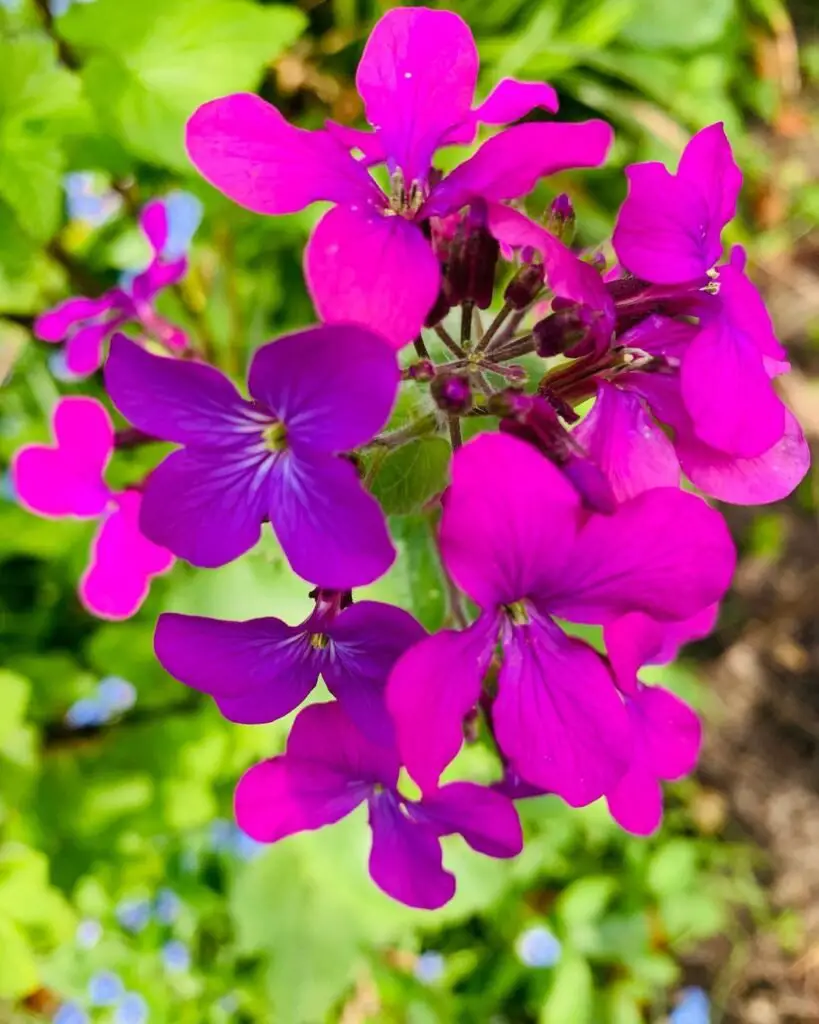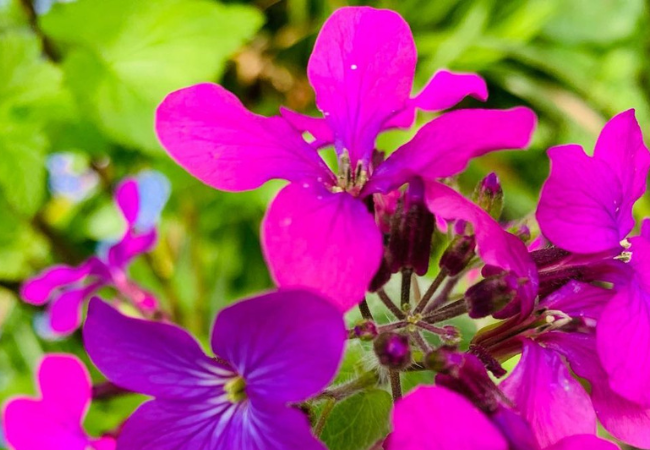Discover the unique Honesty Flower, also known as Lunaria. Learn how to grow this interesting plant, its uses in gardens and crafts and why it’s called the “money plant.”
Have you heard of the Honesty flower? It’s a plant with an interesting name and even more interesting features. Let’s learn about this special flower that’s becoming popular in USA gardens.
Here’s an information chart for the Honesty flower:
| Category | Information |
|---|---|
| Botanical Name | Lunaria annua |
| Common Name | Honesty, Money Plant, Silver Dollar Plant |
| Plant Type | Biennial |
| Hardiness Zone | 4-9 |
| Sun Exposure | Full sun to part shade |
| Soil Type | Well-draining, moist |
| Watering | Moderate |
| Growth Habit | Upright |
| Height/Spread | 2-3 feet tall, spread of 1-1.5 feet |
| Special Features | Decorative seed pods, self-seeding |
What is the Honesty Flower?

The Honesty flower, also called Lunaria or money plant, is a flowering plant that’s easy to grow. It’s not grown just for its flowers, but for its unique seed pods that look like silver coins.
Key Features
- Purple or white flowers in spring
- Flat, round seed pods that turn silvery
- Grows about 2-3 feet tall
- Biennial plant (lives for two years)
Growing Honesty Flowers
If you want to grow Honesty flowers, here’s what you need to know:
- Sunlight: They like full sun or partial shade.
- Soil: They grow well in most types of soil.
- Water: Water them regularly, but don’t overwater.
- Planting: You can plant seeds in spring or fall.
Honesty flowers are pretty easy to grow. They can even spread on their own in your garden.
Uses of Honesty Flowers
Honesty flowers have several uses:
- Garden beauty: They add color in spring and interest in fall and winter.
- Dried arrangements: The dried seed pods are great for crafts.
- Natural decor: Use the dried pods in holiday decorations.
- Wildlife food: Birds like to eat the seeds.
Why is it Called Honesty?
The name “Honesty” comes from the plant’s see-through seed pods. When the outer parts fall off, you can see the seeds inside, like being honest and showing what’s inside.
Caring for Your Honesty Plants
To keep your Honesty plants healthy:
- Pruning: Cut back old stems after flowering.
- Support: Tall plants might need stakes to stand up straight.
- Mulching: Add mulch around plants to keep soil moist.
Remember, Honesty is a biennial. This means it grows leaves the first year and flowers the second year.
Harvesting and Using Seed Pods
The seed pods are a big reason people grow Honesty. Here’s how to use them:
- Wait until pods turn brown and papery.
- Cut stems and hang them upside down to dry.
- Gently remove the outer layers to reveal the “silver dollars.”
- Use in dried flower arrangements or crafts.
For more craft ideas, check out the Smithsonian Gardens education resources.
Problems and Solutions
Honesty plants don’t usually have many problems, but watch out for:
- Slugs: These can damage young plants. Use slug traps if needed.
- Powdery mildew: This fungus looks like white powder on leaves. Improve air circulation to help prevent it.
Honesty Flowers in History and Culture
Honesty flowers have been grown in gardens for hundreds of years. In the past, people thought these plants could ward off evil. The plant’s Latin name, Lunaria, means “moon-shaped” and refers to the shape of the seed pods.
The U.S. Forest Service has more information about the cultural uses of various plants.
Honesty flowers are unique plants that offer beauty in different ways throughout the year. From pretty spring flowers to interesting seed pods in fall and winter, they bring something special to any garden. They’re easy to grow and fun to use in crafts, making them a great choice for gardeners of all skill levels.
Why not try growing some Honesty flowers in your garden? You might be surprised by how much you enjoy these interesting plants!
For more gardening tips and plant care guides, visit usagardenhub.com.

